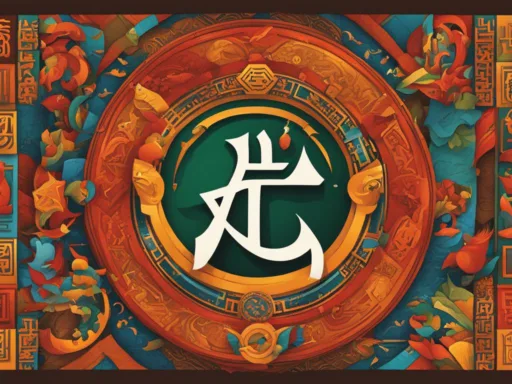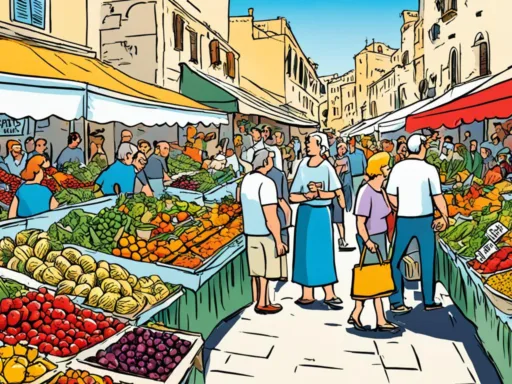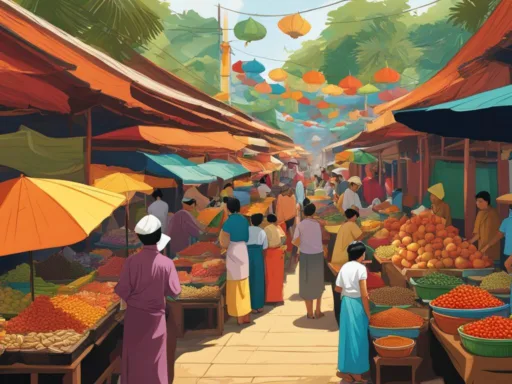Imagine walking through the vibrant streets of Romania and overhearing conversations in not just one, or two, but over a dozen different languages. This is the linguistic reality of Romania, where a staggering **90% of the population converse fluently in Romanian**, with the remaining population enriching the nation with a kaleidoscope of minority and foreign languages. From the rolling hills of Transylvania to the coastal breeze of the Black Sea, **linguistic diversity** is a cornerstone of Romanian culture. Embracing a myriad of languages including Hungarian, Romani, Ukrainian, and many more, Romania presents a remarkable case study in multilingual coexistence.
The linguistic fabric of Romania is a reflection of its intricate history and the confluence of cultures across its landscapes. With such a wealth of tongues woven into its societal quilt, the phenomenon of **languages spoken in Romania** offers an intriguing glimpse into the region’s past and its present-day global connections. As you delve into this linguistic exploration, prepare to be captivated by the sheer diversity and cultural richness that define Romania’s spoken word.
Key Takeaways
- Romanian reigns as the primary language, spoken by over 90% of the population.
- Minority languages are celebrated, with Hungarian and Romani having notable numbers of speakers.
- Linguistic rights and cultural heritage are enshrined in Romanian law, promoting **linguistic diversity** across the country.
- Foreign languages such as English and German are widely understood, reflecting Romania’s cosmopolitan outlook.
- The presence of traditional and minority languages, such as Ukrainian and German, highlights Romania’s rich historical layers.
Romania’s Linguistic Landscape: An Overview
Immersed in a heritage rich in cultural and linguistic diversity, Romania presents an intricate web of languages, telling stories of its historical and social evolution. The prominence of Romanian as the official language is complemented by a myriad of minority languages, each holding their unique position within the country’s social tapestry.
Accommodating the myriad linguistic preferences of its populace, Romanian law respects and conserves the linguistic rights of minority groups. This cultural empathy ensures that certain minority languages are granted co-official status at regional levels, allowing locals to preserve and nurture their traditional speech.
| Language | Legal Status | Regional Co-Official Status |
|---|---|---|
| Romanian | National Official Language | Ubiquitous |
| Hungarian | Protected Minority Language | Present in certain areas |
| Romani | Protected Minority Language | Localized co-official status |
French, though not indigenous, plays a significant role within Romania, consequential from a historical predilection towards Francophonie. This affection for French is manifested in Romania’s membership in the Organisation internationale de la Francophonie, underscoring the nation’s admiration for Francophone culture and language.
- Romanian holds a distinct place in Romania’s official administration and public life.
- Minority languages, reflective of Romania’s diverse cultural foundation, are provided legal protections.
- French, a non-native yet historically significant language, maintains a prestigious cultural foothold within Romania.
The traditional languages of Romania are not merely modes of communication; they are the lifeline of the nation’s multifaceted heritage. With every linguistic nuance, Romania weaves its story as a defender and promoter of cultural plurality.
Languages Spoken Romania: from Romanian to Minorities
The Romanian language serves as the pervasive mode of communication across Romania, proudly spoken by more than 90% of its citizens as their first language. Its primacy is more than a cultural fixture; it’s legally enshrined. The 2006 legislative affirmations established Romanian as the indisputable official language, reinforcing its place at the heart of national and local discourse.
Yet, Romania’s linguistic portrait is far from monochromatic. Minority languages enrich the nation’s cultural canvas, each thread contributing to an intricate linguistic mosaic. To validate this diversity, the legal system of Romania extends extensive linguistic rights to minority groups, underscoring a commitment to cultural acknowledgment and inclusivity.
In locales where minority languages are spoken by over 20% of the population, these languages emerge in local administration and even in the judicial sphere. This embrace of linguistic multiplicity not only illustrates the respect for cultural rights but also reaffirms the Romanian ethos of a communal, diverse identity.
- Recognition and use of minority languages in governmental procedures
- Instruction and documentation readily available in various minority tongues
- Upholding a tradition of promoting both the Romanian language and the wealth of minority languages throughout Romania
The Official Language of Romania: Romanian
As the official language of Romania, the Romanian language stands as a testament to the nation’s rich cultural tapestry. A Romance language derived from Latin, it holds familial ties to Italian, Spanish, French, and Portuguese, yet it is distinctly unique, mirroring the layered cultural history of Romania. With its official status, Romanian encapsulates the cultural identities and histories that are intrinsic to the Romanian people.
A Close Look at the Romanian Language
Defined by its Latin roots, the Romanian language is a living bridge to Romania’s ancient past. Over the centuries, it has been shaped by geographic and historical influences, incorporating elements from Slavic and Balkan languages. This malleability has allowed Romanian to remain vibrant and relevant, preserving a linguistic link to the country’s heritage while seamlessly adopting new linguistic threads.
The History and Cultural Significance of Romanian
The evolution of the Romanian language is intrinsically linked to the nation’s historical narrative. From the Roman conquests that brought Latin to the region to the influence of neighboring empires, each epoch left a linguistic imprint. This sort of linguistic layering has not only enriched Romanian but also turned into a repository for the nation’s collective memory, enshrining centuries of cultural exchange and transformation.
Romanian Language Day: Celebrating Linguistic Heritage
On August 31st, Romania remits tribute to its linguistic roots during Romanian Language Day, a celebration enacted not only within its own borders but also in neighboring Moldova. This annual event is a reflection of national pride and an occasion to reinforce the importance of the Romanian language as a cornerstone of cultural identity.
Hungarian: The Largest Minority Language
The tapestry of minority languages in Romania is rich and varied, but it is the Hungarian language that shines through as the preeminent voice of the country’s minorities. It is, notably, the largest minority language in Romania, acknowledged for the size of its speaking community and the cultural imprint it has left on the nation. With well over 1.2 million speakers based on the latest census, the Hungarian-speaking population primarily inhabits the historical region of Transylvania.
Transylvania serves as a living museum of the Hungarian presence, showcasing a partnership between land and language that has been intricately woven over centuries. This area, incidentally, delineates the profound influence that Hungary has had on Romania’s territorial and cultural landscape. The legacy and continuity of the Hungarian minority in Romania are not just a matter of numbers but a testament to the endurance of a language and its people amidst a panorama of change.
The linguistic rights accorded to Hungarian speakers highlight Romania’s commitment to multiculturalism and linguistic diversity. Such rights include the use of Hungarian in education, public administration, and judicial matters in locales where Hungarians form a significant part of the populace. These initiatives exemplify Romania’s recognition of the importance of nurturing and preserving the languages of its minorities, amongst which Hungarian has a place of honor.
Below is a depiction of the regions where the Hungarian minority has a prominent presence and where their language vibrates through town squares, schools, and government halls:
- Central Transylvania
- Partium
- Szekler Land

In these areas, the Hungarian language not only survives but thrives, with cultural festivals, media, literature, and academic institutions flourishing in support of the language. Behind every interaction in Hungarian, there’s a strand of shared history and an assertion of identity, echoing that in Romania, the melody of languages does not wane but grows stronger with the support of communities and policies that welcome diversity.
In embracing the Hungarian language and its speakers, Romania stands out as a model for minority language preservation in Europe. It creates a striking balance between fostering national unity and honoring the mosaic of voices that contribute to the nation’s dynamic legacy.
Carrying Voices of the Past: The Romani Language
The rich tapestry of Romani language Romania is a compelling embodiment of the nation’s linguistic diversity. A living legacy of nomadic roots, the Romani language sustains its vibrancy among the Roma community, the second-largest minority group in Romania.
The Romani community’s profound historical presence has influenced Romania’s cultural and linguistic landscape, ensuring that minority languages Romania like Romani thrive amidst regional and national dialogues.
Understanding the Romani Linguistic Community
The Roma’s language reflects a mosaic of dialects, such as Balkan, Vlax, and Carpathian Romani, each bearing nuances that narrate a distinct chapter of their history. With its roots deeply intertwined with the Indo-European language family, the Romani language in Romania becomes a lens through which the saga of an entire people can be viewed and appreciated.
Integration of Romani in Local Governance
In testament to the progress in Romani language integration, Romania recognizes the cultural and societal contributions of its Romani population. Romanian settlements with notable Roma communities have taken affirmative steps to integrate Romani in local governance, an initiative that includes the introduction of bilingual signage and the provision of public services in Romani. This inclusivity strikes a chord with ideals of cultural pluralism and supports the continuity of this storied language.
| Aspect of Integration | Examples |
|---|---|
| Signage | Romani and Romanian bilingual signs in settlements |
| Education | Romani language classes for community members |
| Local Administration | Provision of administrative services in Romani |
| Public Services | Access to healthcare and legal aid in Romani |
Ukrainian: A Slice of Linguistic Diversity
Among Romania’s medley of voices, the Ukrainian language adds a distinct tone to the country’s linguistic diversity. Predominantly found in Maramureș County, Ukrainian-speaking Romanians are continuing a centuries-long history that transcends borders. This community, numbering close to 58,000 individuals, preserves their traditions and language, reinforcing the multicultural fabric of Romania.

The Ukrainian minority in Romania enjoys support for cultural and educational activities, ensuring that the Ukrainian language in Romania is not only maintained but flourishes. Schools teach in Ukrainian, fostering the next generation of bilingual Romanians comfortable in both Romanian and Ukrainian. Additionally, Romania recognizes the importance of cultural events and media in minority languages, providing avenues for the Ukrainian language in Romania to be heard and celebrated within the public sphere.
| Language | Speakers in Romania | Region Predominantly Spoken |
|---|---|---|
| Ukrainian | Approximately 58,000 | Maramureș County |
| Romanian | Over 20 million | Nationwide |
| Other Minority Languages | Varied | Diverse Regions |
In summary, the presence of the Ukrainian community within Romania illuminates the strength and beauty of the nation’s linguistic diversity. It’s a testament to Romania’s commitment to honoring and nurturing the tapestry of languages that thrive within its borders.
German Heritage and Its Linguistic Footprint
The echoes of Germany’s historical presence ring clear in Romania’s cultural landscape, predominantly through the enduring legacy of the German minority in Romania. The Transylvanian Saxons, a venerable community within this minority, have contributed significantly to Romania’s ethnolinguistic diversity, carving a niche for German language Romania that stands strong to this day.
Despite membership numbers that have decreased over time, the Transylvanian Saxons, along with groups such as the Banat Swabians, remain devoted to preserving their unique cultural and linguistic identity.
The Legacy of Transylvanian Saxons
The Transylvanian Saxons arrived in Romania during the High Middle Ages, bringing with them robust traditions and rich Germanic language that have survived the tides of history. Their influence remains palpable in the fortified churches, distinct architecture, and lingering traditions that continue to be part of Romania’s cultural patrimony.
Preservation of German Dialects in Romania
In the pursuit of linguistic preservation Romania, several initiatives have been taken to maintain the German dialects that define the German minority in Romania. Cultural festivals, educational programs, and publications play an integral role in keeping the language alive for future generations—preventing the complete dissolution of the Germanic linguistic footprint within Romania’s borders.
Resonating Slavic Tunes: Russian in Romania
The intricate tapestry of minority languages Romania is enriched by the harmonious presence of the Russian language Romania. Nestled within this diverse cultural panorama are the Lipovans—Russian Old Believers who found a haven in Romania centuries ago. Their language and traditions have stood the test of time, adding another layer to the ethnic and linguistic mosaic of the nation.
The Lipovan community, primarily situated in the serene landscapes of Tulcea County, gives voice to an age-old heritage through their Slavic dialect. This Russian language Romania enclave reflects the perpetual dance of historical narratives with nearly 29,890 speakers maintaining their mother tongue amidst the broader Romanian setting.
| Region | Population of Russian Speakers | Cultural Significance |
|---|---|---|
| Tulcea County | Approx. 29,890 | The epicenter of the Lipovan community, preserving Orthodox traditions and the Russian language |
| Izmail and Kiliya | Smaller communities | Historical settlement areas reflecting past migrations and cultural resilience |
| Dobruja | Significant presence | Integration of the Lipovans into the diverse ethnic fabric of the region |
Through their songs, spoken word, and religious practices, the Lipovans not only contribute to the cultural wealth of minority languages Romania but also ensure that the echoes of their distinct Russian dialect continue to resonate across the verdant plains and deltas of their adopted homeland.
The Turkic Linguistic Presence: Turkish and Tatar
The mosaic of Romania’s linguistic history is marked by the enduring presence of Turkic languages, borne from the centuries-old influences of the formidable Ottoman Empire. Foremost among these are the Turkish and Tatar languages, each with its unique community and rich cultural narrative that contribute to the linguistic diversity Romania is known for.
Turkish Speakers in Romania: A Historical Perspective
In the shadow of the Ottoman Empire’s expanse, Turkish found a foothold in Romania, leaving an indelible mark on the cultural and linguistic landscape. Today, the Turkish minority in Romania includes 28,714 speakers, whose presence underscores the nation’s historical cross-cultural dialogues and interactions with its eastern neighbor.
Crimean Tatar Community and Language in Romania
The Crimean Tatar language, a testament to the resilience of the Tatar people, continues to resound in the sphere of Romania’s linguistic diversity. With 21,482 individuals comprising the Crimean Tatar Romania community, primarily in Constanța County, the language richly contributes to the nation’s tapestry of voices and echoes a past intertwined with the Ottomans.
Other Minority Languages in the Romanian Mosaic
In the rich tapestry of Romania’s linguistic landscape, not only do the prominent languages play significant roles, but also the less conspicuous ones that fill the canvas with a distinct cultural charm. The intricate interplay of these languages showcase Romania’s diverse heritage and reflect the historical passages that have influenced the nation’s linguistic contour. Particularly, the resonance of Balkan languages Romania and Slavic languages Romania can be heard in the voices of their respective communities.
The Influence of Balkans and Slavic Languages
In communities scattered throughout Romania, the echo of South Slavic languages such as Serbian and Croatian adds depth to the nation’s multicultural dialogue. These languages find their roots intertwined with the historical, geopolitical tapestry, where shifting borders and migrations have enabled the continuation of linguistic traditions. The cultural exchange at the crossroads of the Balkans has left an indelible mark on Romania, enriching its societal fabric with the linguistic contributions of the Slavic world.
Lesser-Known Languages and Their Roles
Beyond the demographic densities of majority languages dwell lesser-known tongues, including those of Slovak and Bulgarian speakers. While their numbers may be small, their presence strengthens the concept of traditional languages Romania. Greek and Macedonian communities, too, preserve their linguistic heritage, contributing to an intricate web of linguistic roles Romania holds within its borders. These communities may represent a smaller fraction of the populace, yet they play a crucial role in maintaining Romania’s identity as a land of varied dialects and voices.

Tracing the French Connection in Romanian Linguistics
The intricate tapestry of Romania’s linguistic history is rich with the influence of the French language. Although not a primary tongue, the impact of French upon the Romanian elite and broader educational policies has been profound, resulting in a legacy that still resonates today.
French language influence in Romania has been bolstered through the country’s membership in the Organisation internationale de la Francophonie, underscoring the shared cultural and historical ties. This affiliation also represents Romania’s commitment to linguistic diversity and international cooperation.
| Period | Influence | Outcomes |
|---|---|---|
| 19th Century | French cultural enlightenment | Incorporation of French lexicon in Romanian |
| 20th Century | Educational influence | French as a preferred second language |
| 21st Century | International relations | Romania’s active participation in Francophonie events |
It is a testament to the resilient cultural and linguistic history of Romania that the French language remains a staple in the nation’s educational system. A notable aspect of this continuing affinity is that approximately 25% of Romanians today learn French, with the language being popular in schools and universities.
“The influence of the French language represents a bridge between Romania and the wider Francophone world, both historically and in contemporary society.”
The presence of French in Romanian culture extends beyond language itself, interwoven with the strands of intellectual tradition, diplomacy, and education, making it an indelible part of Romania’s multicultural identity.
Embracing Multilingualism: Foreign Languages in Romania
Romania’s spirit of inclusivity and cultural exchange is best represented by its people’s proficiency in a variety of foreign languages. English, in particular, has emerged as a widely-spoken lingua franca, opening doors to international business, education, and tourism. Moreover, languages such as Dutch, German, and Turkish not only reflect the historical ties Romania has with other nations but also signify its current role as an active participant in the European and global community.
Bearing witness to the multilingualism that blooms within its borders, Romania offers a rich linguistic landscape for both locals and visitors. This dynamic environment fosters an important dialogue between cultures, contributing to a deeper understanding and appreciation of diversity. It’s not uncommon to hear a tapestry of accents and tongues in cities like Bucharest, Cluj-Napoca, and Timișoara, mirroring the multifaceted nature of the nation’s identity.
Below is an overview showcasing the popularity of various foreign languages among the Romanian population:
- English – Embraced by the youth and professionals alike as a key skill for global engagement
- Dutch – Spoken by a niche community, often in business settings and within educational programs
- German – Benefiting from cultural and economic ties, German is a preferred second language in schools
- Turkish – The language of a historic minority, contributing another layer to Romania’s linguistic narrative
The encouragement of foreign languages in Romania’s educational system and the role they play in the corporate sector, signify a commitment to multilingualism. Spreading beyond the confines of necessity, it also illustrates an enthusiasm among Romanians to integrate with the European community and beyond, fostering connections that span the globe.
Conclusion
In the tapestry of nations, few can boast such a rich weave of linguistic strands as Romania. Encompassing a plethora of dialects and tongues, the languages spoken in Romania are a testament to its dynamic cultural evolution and the resilience of its heritage. From the cobblestoned streets of Transylvanian towns echoing with Hungarian to the sandy beaches of the Black Sea where Turkish and Tatar are spoken, Romania’s linguistic landscape is a living gallery of its history.
The dominion of Romanian as the primary language underscores not only a majority voice but also a connection to the Romance language family. Yet, this majority presence does not overshadow the symphony of minority languages that enliven Romania’s social fabric. Indeed, the nation’s linguistic diversity leverages a historical cosmopolitanism, with each language contributing to the society’s collective narrative and modern identity.
As an epitome of cultural crossroads, Romania’s commitment to nurturing its linguistic panorama is pivotal, both as a bridge to its own past and as an outreach towards global integrations. The melody of Romanian, the chorus of minority languages, and the harmony of multilingual fluency combine to compose a unique score—a declaration of unity in diversity that continues to resonate through the ages.






